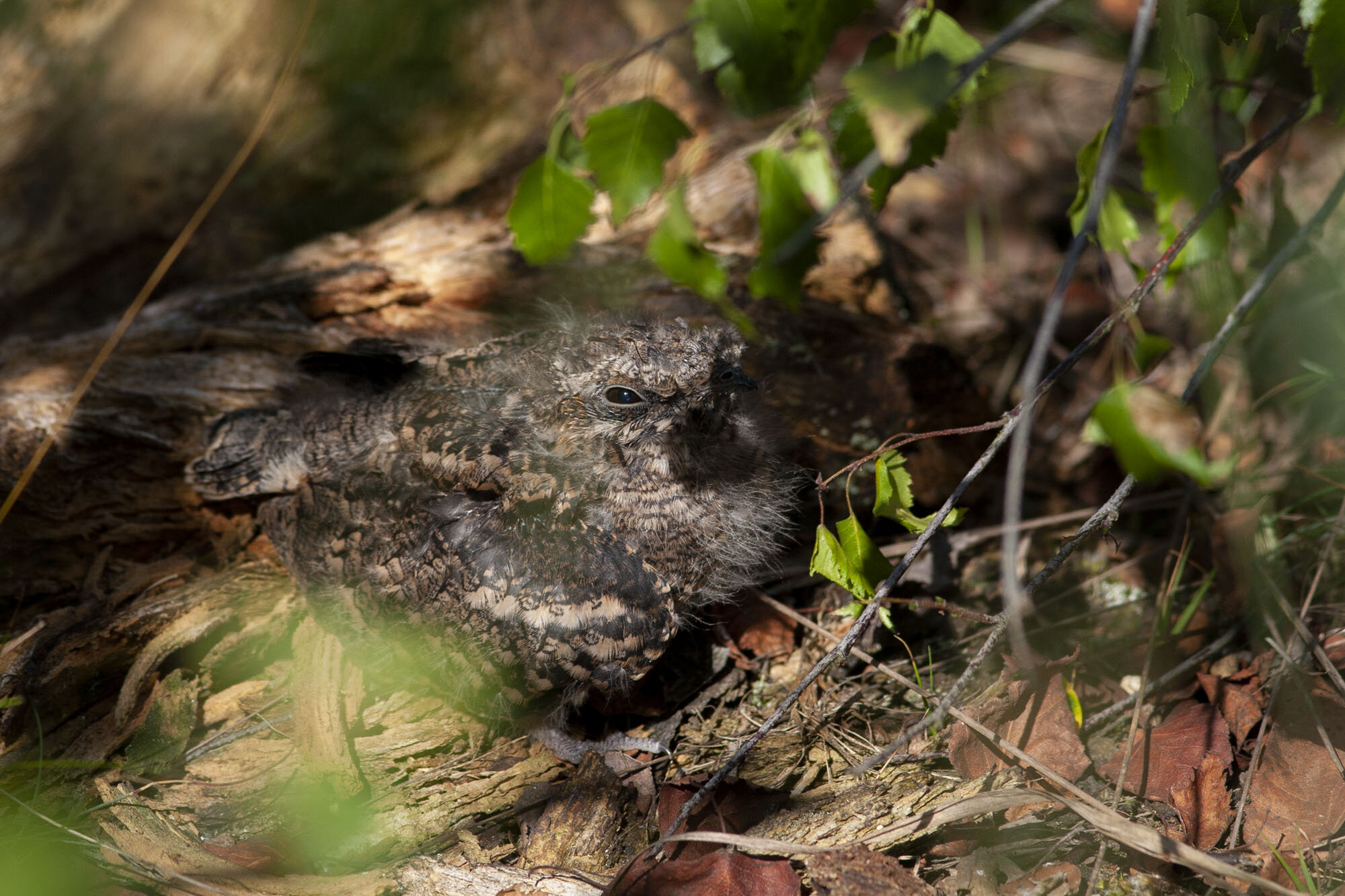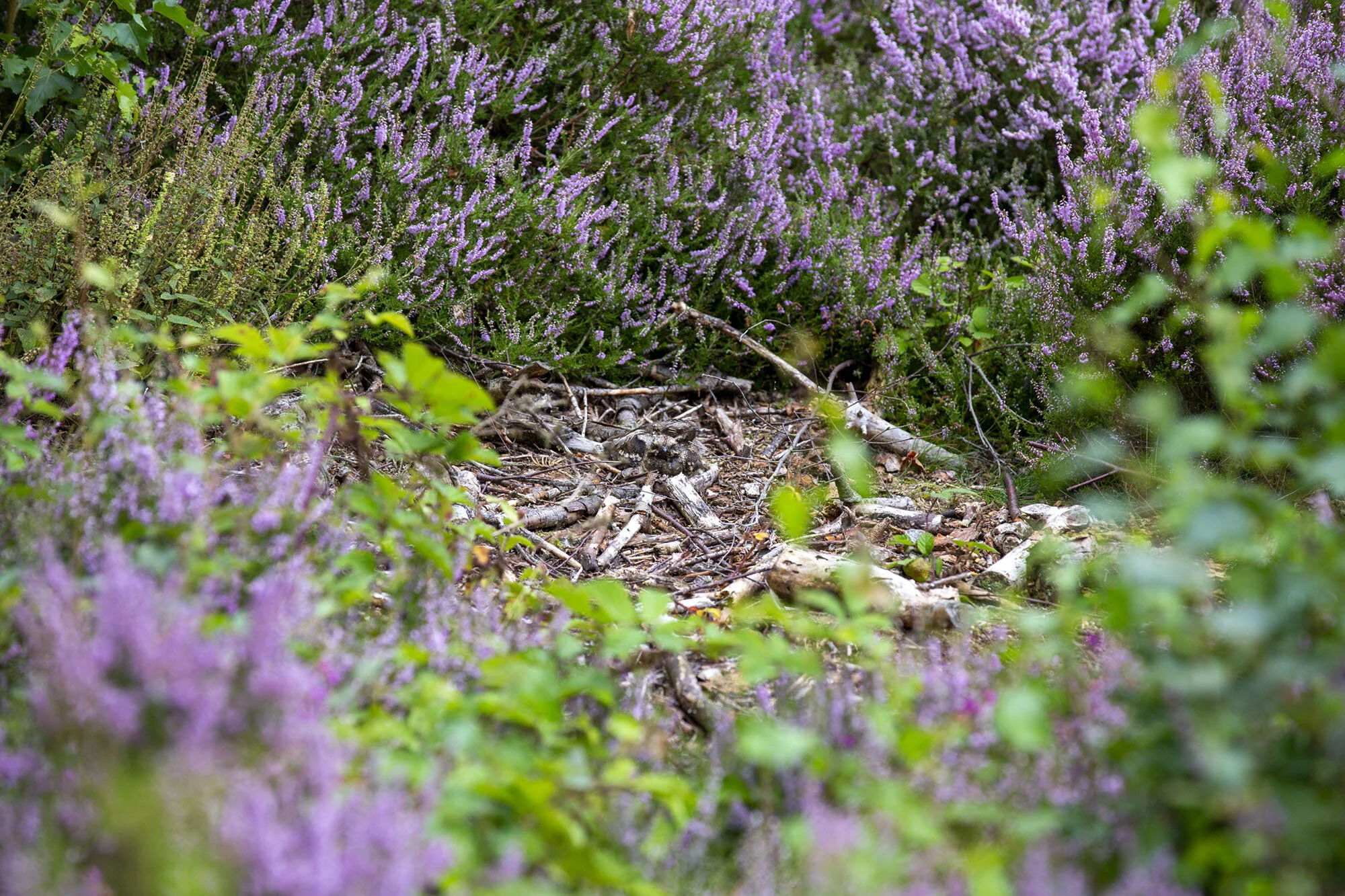Heath and Forest birding in North Lincolnshire

Sunrise in Laughton forest
Since 1984 I have been involved with various bird study projects in Laughton Forest concentrating mainly on three iconic heathland species, Woodlark, Nightjar and Tree Pipit all of which are now rare and highly restricted in their distribution in Lincolnshire. In addition to these single species studies I undertook a Breeding Bird Atlas project mapping and estimating all the bird species in the Forest in 2000 with a follow up in 2012 and a less intensive survey in 2015. The forest extends into 22 different 1km squares and this was the basis for the mapping project. As a commercial forest the habitats change over time with clear felling, thinning and replanting affecting the habitats available for breeding birds. In addition there have also been changes in forestry practice with selective felling within plantations having replaced large scale clear felling and this has impacted seriously on the populations of all three of the heathland species noted above. With this in mind Forest Enterprise initiated a wet heath restoration project in part of the forest in 1997 and I monitored the breeding birds on that area from 1997 through to 2019 a challenging but interesting project.
male European Nightjar
Finding perched Nightjars in the daytime became something of an obsession for many years and after a few hundred hours I did find a fair few in the study area and also a few nests. The gallery below shows a selection of images of perched birds and nest sites with some more nighttime shots of birds trying to capture the feeling of the post sunset views of this iconic species. Finding perched birds needs a very cautious approach and it is all too easy to flush birds before seeing them so a very softly, softly search is needed with constant ground scanning.
The nest shots show females and juveniles of varying ages in a variety of nest areas, some a lot more easy to see. than others but by June most nests are very well hidden as the vegetation grows up across the heath.
the bird to the right is in this image taken from 5m away
nests are not usually this open and this egg had been abandoned
three Nightjars and a Nightjar log
this male was still displaying at 04:30 in the morning in late May
Woodlark Lullula arborea
My first experience of the Woodlark in Lincolnshire was a purely verbal one. Sitting with the late Reg May and Derek Robinson on Greetwell Common in spring 1971, Reg regaled us with tales of breeding Woodlarks on the heathland there in the 1950’s but in a salutary note he also described finding a group of dead birds by a local farmer on an adjacent field in 1960, killed by organo-chlorine ingestion and these proved to be the last of the Lincolnshire breeding Woodlarks for 25 years. Indeed in an update to county avi-fauna published in 1970 it was stated that it seemed unlikely Woodlarks would breed in Lincolnshire again. This fortunately proved not to be the case. While looking for Nightjars at Laughton in 1984 I came across a party of three Woodlarks and the assumption was that they had bred there although by then it was early July. With permission from the then Forestry Commission, I surveyed the forest in the following year and found three pairs. Surveys continued through to 2003 and have been repeated in several subsequent years. The forest population peaked in 2000 when a large area of clear-felled forest was available for nesting but since then the amount of suitable habitat has declined rapidly due to restocking and changing forestry practices and the Woodlark population has tumbled. Woodlarks need an area of short-grazed heathland with longer grass tussocks in which to place nests and scattered trees or posts to use as song perches. Such habitat was typical of the old rabbit warrens that persisted on the heaths of north-west Lincolnshire through to the 1980’s but in the last 20 years the number of Rabbits has been decimated by various diseases and most heathland sites no longer have a viable Rabbit population without which vegetation quickly grows too long for the Woodlarks and replacing Rabbits with domestic livestock is far less effective in habitat creation.
The chart below refers to Laughton Forest. On some of the other heaths in north-west Lincolnshire Woodlarks are faring better but the overall population is down on that recorded at its peak in the early 2000’s.
Woodlarks can be very inconspicuous when not singing and blend in well with their habitat and are thus easily overlooked when nesting.
Breeding Woodlarks in Laughton Forest 1984 - 2018














































